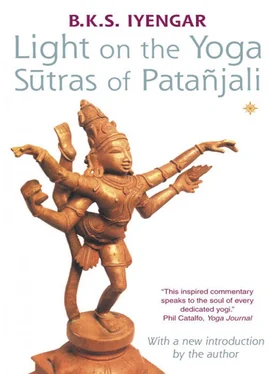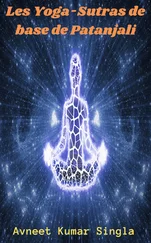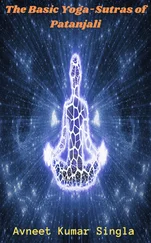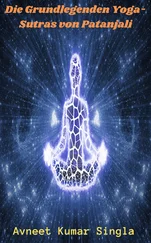If the sadhaka adheres to the principles of ahimsa, all beings around him abandon their hostile behaviour. By observance of satya , spoken words fructify into action. All kinds of treasures are bestowed on him who observes asteya. For a brahmacari (a chaste or celibate person), vigour, vitality, energy and spiritual knowledge flow like a river. One who observes aparigraha will come to know of his past and future lives.
The five niyamas are to be followed not merely as individual, but also as spiritual, disciplines. They are: sauca (cleanliness or purity), santosa (contentment), tapas (religious fervour), svadhyaya (study of the sacred scriptures and of one’s own self) and Isvara pranidhana (surrender of the self to God).
sauca is of two types, external and internal. One’s daily bath is external; Asana and pranayama cleanse one internally. They help to cleanse one’s thoughts, words and actions, and make the body fit for its Lord to dwell in. Santosa brings about a state of cheerfulness and benevolence. Tapas is a burning effort involving purification, self-discipline and austere practice. It is religiousness or devoutness in the practice of yoga. Tapas purges and purifies the body, senses and mind. Svadhyaya enlightens the practitioner with the knowledge of his inner immortal being. Isvara pranidhana brings the inner being to his creator, the Supreme God.
Actually, the observance of yama brings about niyama, and the practice of niyama disciplines one to follow the principles of yama. For example, non-violence brings purity of thought and deed, truthfulness leads to contentment, non-covetousness leads to tapas. Chastity leads to the study of the self, and non-possessiveness to surrender to God. Similarly, cleanliness leads towards non-violence, and contentment towards truthfulness. Tapas guides one not to misappropriate another’s wealth. Study of the self leads towards chastity, and surrender to God frees one from possessiveness.
By now, the reader is acquainted with the causes of afflictions. Not only do yama and niyama help to minimize and uproot them; they are also the firm foundation of spiritual experience. They are the ethical disciplines which show us what must be done and what must be discarded. They are the golden keys to unlock the spiritual gates.
Sooner or later, improper use of words, impure thoughts and wrong actions result in pain. Pain may be self-inflicted ( adhyatmika ), due to fate or heredity ( adhidaivika ), or to imbalance of elements in the body ( adhibhautika). It may be caused by lust, anger or greed, indulged in directly, by provocation or by compliancy. The resulting sorrows may be mild, moderate or intense.
The causes of lust, anger and greed can be countered directly by self-analysis, or subdued by invoking their opposites: balance, poise, peace and harmony. Because the latter dualistic approach may cause one to hide from the facts, the former is the better approach. The use of analysis, study and investigation requires courage, strength and discretion. The evocation of opposite tendencies is not a cure, but a help. The first is a direct method of purification; the second an indirect method of appeasement. Patañjali suggests that both should be followed to speed progress.
Asana means posture, the positioning of the body as a whole with the involvement of the mind and soul. Asana has two facets, pose and repose. Pose is the artistic assumption of a position. ‘Reposing in the pose’ means finding the perfection of a pose and maintaining it, reflecting in it with penetration of the intelligence and with dedication. When the seeker is closer to the soul, the Asanas come with instantaneous extension, repose and poise.
In the beginning, effort is required to master the Asanas. Effort involves hours, days, months, years and even several lifetimes of work. When effortful effort in an Asana becomes effortless effort, one has mastered that Asanas , In this way, each Asana has to become effortless. While performing the Asanas , one has to relax the cells of the brain, and activate the cells of the vital organs and of the structural and skeletal body. Then intelligence and consciousness may spread to each and every cell.
The conjunction of effort, concentration and balance in Asana forces us to live intensely in the present moment, a rare experience in modern life. This actuality, or being in the present, has both a strengthening and a cleansing effect: physically in the rejection of disease, mentally by ridding our mind of stagnated thoughts or prejudices; and, on a very high level where perception and action become one, by teaching us instantaneous correct action; that is to say, action which does not produce reaction. On that level we may also expunge the residual effects of past actions.
The three origins of pain are eradicated by Asana as we progress from clear vision through right thinking to correct action.
To the new student or non-practitioner of yoga a relentless pursuit of perfection in Asana may seem pointless. To advanced students, a teacher teaches a whole Asana in relationship to what is happening in a single action. At this subtlest level, when we are able to observe the workings of rajas, tamas and sattva in one toe, and to adjust the flow of energy in ina, pitgala and susumna (the three principal nanis, or energy channels), the macrocosmic order of nature is perceived in even the smallest aspects. And when the student then learns how the minutest modifications of a toe can modify the whole Asana , he is observing how the microcosm relates to the whole, and the organic completeness of universal structure is grasped.
The body is the temple of the soul. It can truly become so if it is kept healthy, clean and pure through the practice of Asana.
Asanas act as bridges to unite the body with the mind, and the mind with the soul. They lift the sadhaka from the clutches of afflictions and lead him towards disciplined freedom. They help to transform him by guiding his consciousness away from the body towards awareness of the soul.
Through Asana , the sadhaka comes to know and fully realize the finite body, and merge it with the infinite – the soul. Then there is neither the known nor the unknown and only then does the Asana exist wholly. This is the essence of a perfect Asana.
Pranayama and its effects
Patañjali states that there must be a progression from Asana to pranayama, but does not mention such a progression in the other branches of yoga. He states that pranayama, should be attempted only after perfection is attained in Asana. This does not mean one Asana alone, as is sometimes suggested.
It should be understood why one Asana is not a sufficient basis for the study of pranayama. In pranayama, the spine and the spinal muscles are the sources of action and the lungs are the receiving instruments. They must be trained to open and to extend backwards, forwards, upwards and outwards, and the spinal muscles straightened, cultured and toned to create space and stimulate the spinal nerves to draw energy from the breath. Inverted postures, forward bends, backbends – the whole range of postures – are therefore essential if we are to derive from pranayama the maximum benefit with the minimum strain.
Читать дальше












